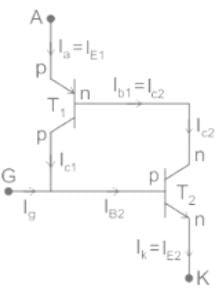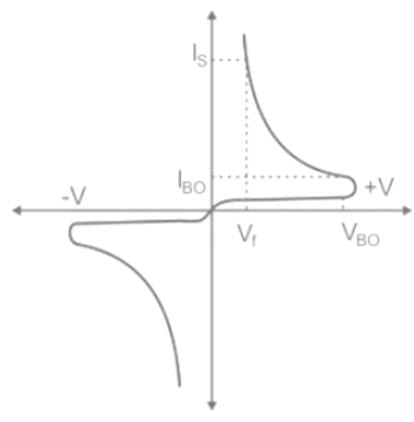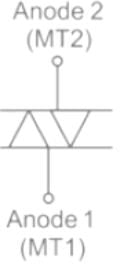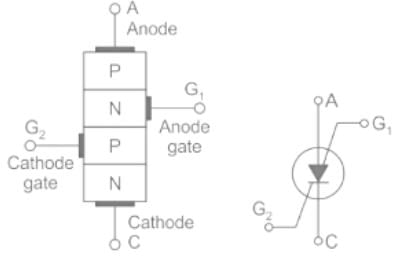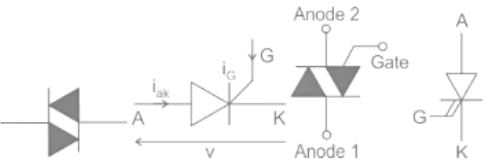Test: Other members of thyristor family - Electrical Engineering (EE) MCQ
10 Questions MCQ Test - Test: Other members of thyristor family
What is the total anode current of SCR in the equivalent circuit from the two-transistor (T1 & T2) analogy of SCR?
A triac is a semi-conductor device which acts as a
Which of the following is used for turning ON DIAC?
The SCR is turned OFF when the anode current is ______ holding current
Four power semiconductor devices are shown in the figure along with their relevant terminals. The device(s) that can carry dc current continuously in the direction shown when gated appropriately is (are)
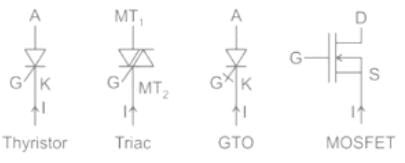
Which of the following is NOT an advantage of SCR as a switch?
Which one of the following is/are not true with reference to a thyristor?
1. Latching current (IL) is associated with the turn-off process and holding current (IH) with the turn-on process.
2. Holding current is associated with the turn-off process and latching current with the turn-on process
3. A thyristor can be termed as an AC switch
Consider the following devices:
1. TRIAC
2. GTO
3. BJT
4. MOSFET
5. DIAC
Which of these devices does not belong to the family of thyristors?


